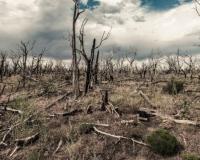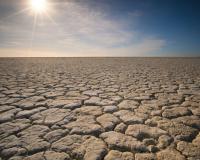
Vibrant Environment
All | Biodiversity | Climate Change and Sustainability | Environmental Justice | Governance and Rule of Law | Land Use and Natural Resources | Oceans and Coasts | Pollution Control
By John Saylay Singbae II, 2025 Jim Rubin Fellow at the Environmental Law Institute and Lecturer in the Department of Aquaculture and Fisheries (DOFAS), University of Liberia

Climate litigation is not a monolith. There is no typical party or set of parties, arguments, defenses, or remedies, and cases raise numerous issues of constitutional, statutory, regulatory and common law. While the media often focuses on a few dozen cases brought by cities and states against fossil fuel companies, the universe of climate litigation is extremely broad and diverse.

Climate Zoning by Christopher Serkin was selected as a top 20 article for the Environmental Law and Policy Annual Review (ELPAR) in 2025.

By Karishma Goswami
Today marks the 23rd observance of the International Day for Preventing the Exploitation of the Environment in War and Armed Conflict. Designated in 2001 by the UN General Assembly, environmental damage remains a pressing issue in conflicts around the world from Ukraine to Sudan to Gaza.

Climate change is making some regions of the world less habitable for humans, influencing where and why people move. According to the Internal Displacement Monitoring Centre (IDMC), 46.9 million new internal displacements were recorded in 2023, out of which 26.4 million (approximately 56%) were due to climate extreme events.

The rise of artificial intelligence (AI) and the rapid deployment of high-performance accelerated servers have dramatically transformed the energy use of data centers. U.S. data centers now make up about 4.4.% of electricity consumption nationwide, up from about 1.9% in 2018, and it is predicted that by 2028, this number could climb as high as 12.0%.

On average, Americans spend 90% of their time indoors, whether that be at home, at work, or in school. As such, the air quality inside of buildings can have a profound impact on human health and wellbeing. Indoor levels of pollutants are often two to five times greater than outdoor levels (and up to 100 times in extreme cases).

The Quest for Legitimacy: A Public Law Blueprint for Corporate Governance by Stavros Gadinis and Chris Havasy was selected as a top 20 article for the Environmental Law and Policy Annual Review (ELPAR) in 2025.

The Environmental Law Institute and NRDC recently released six model resolutions on advancing food waste reduction, complimenting the six existing ELI/NRDC model municipal policies. These new model resolutions provide template language that city councils and other municipal legislative bodies can adopt, in whole or in part, to express support for a range of food waste reduction measures

The rise of e-commerce has revolutionized the way America shops. Items appear on doorsteps just hours after being added to online carts, offering consumers an unprecedented level of convenience -- but the allure of same-day delivery and return services hides a more dangerous reality. As demand for the rapid distribution of goods increases, warehouses are cropping up closer and closer to homes, potentially posing significant environmental health threats to local communities and giving rise to a dangerous instance of environmental injustice.